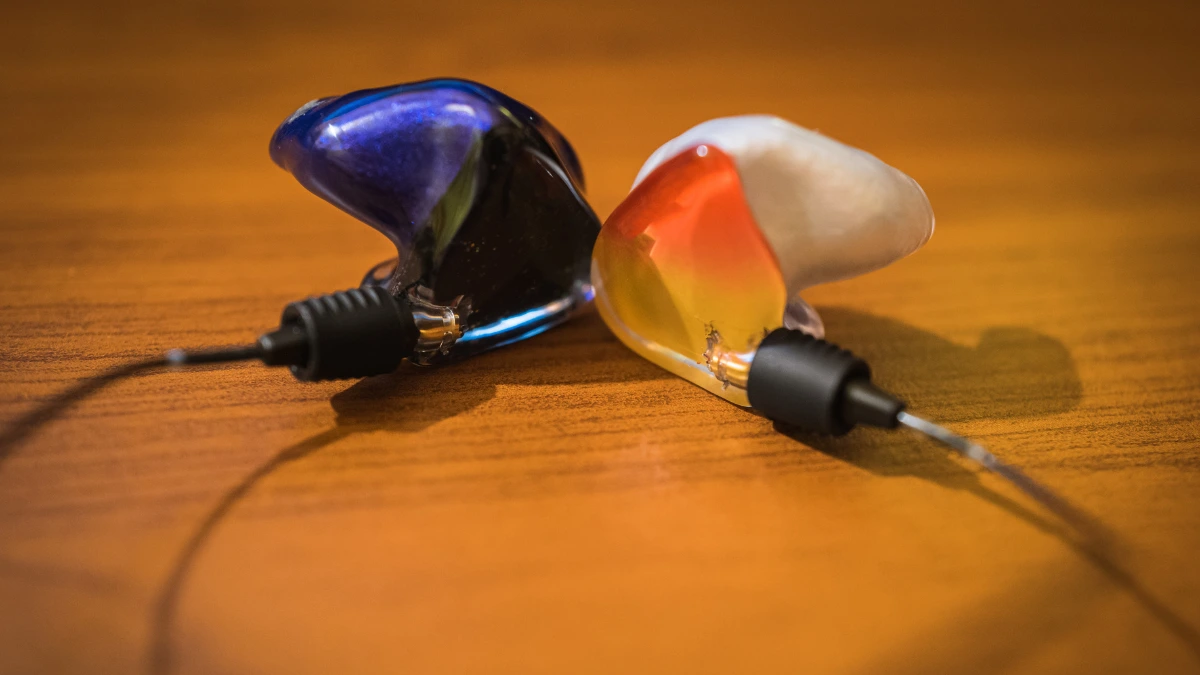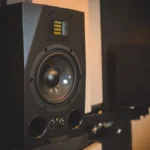In-ear monitors (IEMs) are the highest caste of headphone systems in terms of sound quality. It’s often used for professionals who work with audio-listening devices.
Are you familiar with the term in-ear monitor? Maybe you’re more familiar with earbuds or True Wireless Stereo (TWS) which are often used by people in general.
Let’s take a closer look at in-ear monitors from the definition, how they work, and their advantages to how they are used by most professionals.
Also Read
Table of Contents
What is an In-Ear Monitor?

An In-Ear Monitor (IEM) is an audio device designed to fit inside the user’s ear. Unlike typical earphones, IEMs offer superior sound quality and are often used by musicians, audio engineers, and audiophiles for a maximum listening experience.
Musicians, audio engineers, and television presenters use IEMs to listen to music or a mix of vocals and instruments. IEMs are also often used in live performances, allowing artists to hear their voices even when surrounded by stage noise.
How In-Ear Monitor Works
In-ear monitor process begins when the mixer sends an audio signal to a transmitter. This transmitter then wirelessly transmits the signal to a receiver. The receiver’s job is to convert the radio signal back into audio, ensuring it retains the quality and clarity intended.
Finally, the IEMs are plugged into the receiver, allowing the user to listen to the audio directly through the earphones. This setup ensures that performers, audio engineers, or anyone using IEMs can receive high-quality sound in real time, even in noisy environments like live concerts or recording sessions.
In-Ear Monitor Components

IEMs (In-Ear Monitors) consist of several key components that work together to deliver a high-quality audio experience.
- Transmitter: The transmitter is a stationary device that plays a vital role in sending the audio signal. Typically positioned near the soundboard or mixing console, the transmitter takes the audio signal from the mixer or sound system and wirelessly broadcasts it
- Receiver: The receiver is a small, portable device, usually worn by the performer or audio engineer in the form of a belt pack. It receives the wireless audio signal transmitted by the transmitter and converts it into an audio output.
- Earphones: The earphones are the final component of the IEM system. These earphones plug into the receiver and are worn inside the user’s ears. They are specially designed to deliver clear, detailed sound directly into the ear canal while blocking out external noise.
The Advantages of In-Ear Monitor
1. Superior sound quality
IEMs are designed to deliver higher sound quality with sharp levels of detail, allowing users to hear every instrument and vocal with great clarity.
2. Sound isolation
A key advantage of IEMs is their ability to reduce sound interference from the surrounding environment, making them an ideal choice for use in noisy venues, such as live concerts or recording studios.
3. Comfort and portability
When compared to over-ear headphones, IEMs are much lighter and easier to carry around. Their ergonomic design ensures comfort, even during prolonged use.
4. Personalization
Many IEMs offer a custom fit option, where custom molds are made to the user’s ear shape to ensure a perfect fit and maximum comfort.
In-Ear Monitor Regulations in Indonesia

In-ear monitor products sold in Indonesia must be certified by the Directorate General of Digital Infrastructure (DJID) under the Ministry of Communication and Digital (KOMDIGI). This is based on Ministerial Decree Number 260 of 2024 and Ministerial Decree Number 12 of 2025, which requires all radio frequency-based devices, including in-ear monitors, to meet specific technical standards before being sold in the country.
The certification ensures that the product meets government safety and quality regulations and does not interfere with other communication devices. The certification process involves technical testing, such as frequency adjustments, safety checks, and compatibility with the surrounding environment.
Once the tests are completed, products that pass are listed in a Test Result Report, which confirms that the product is safe and ready for sale in Indonesia. This report reassures customers that the product meets technical standards and is secure to use.
For companies wanting to sell in-ear monitors in Indonesia, Type Approval Certification Services for ICT Products are available to assist with this process. This service includes preparing technical and legal documents, conducting required testing, ensuring compliance with regulations, helping companies streamline the certification process, and giving consumers confidence in certified products.











